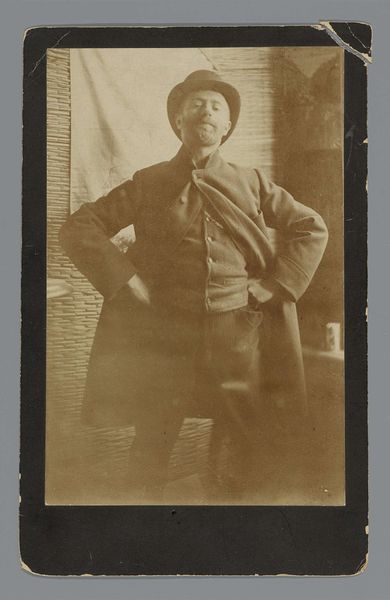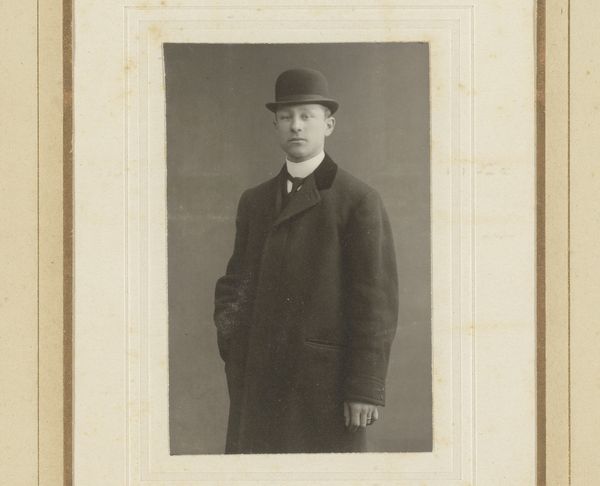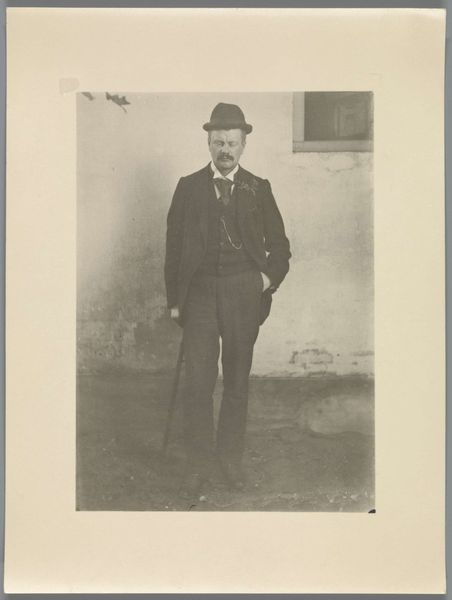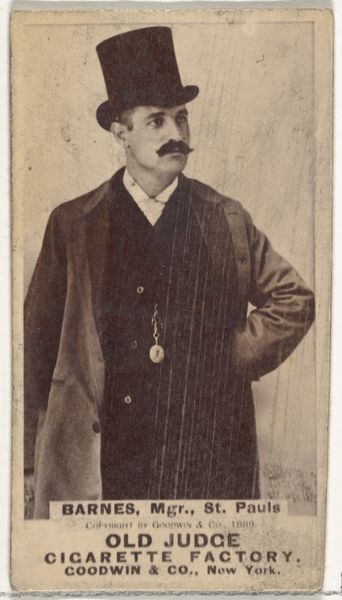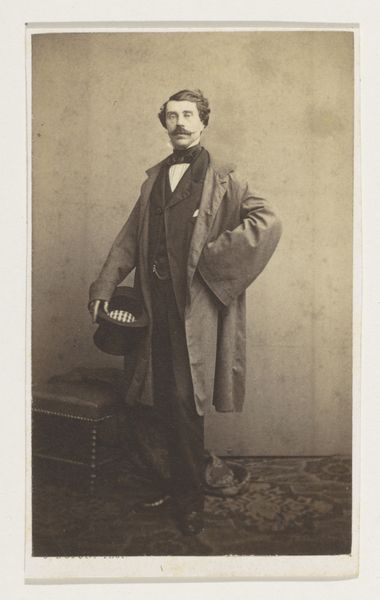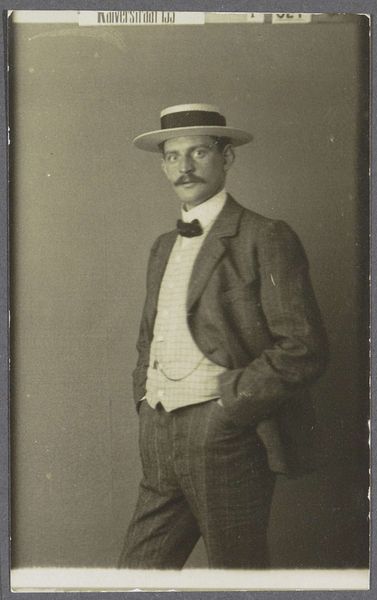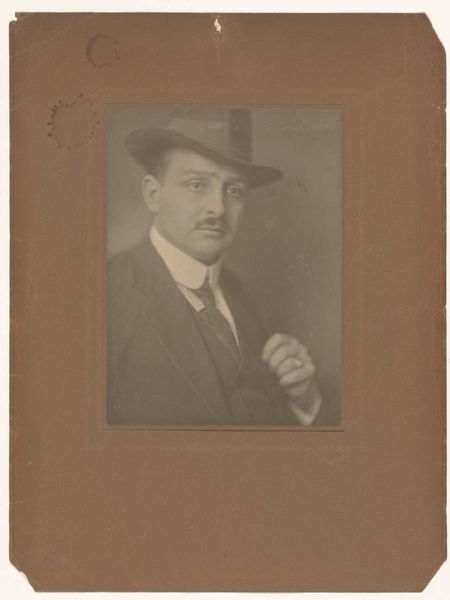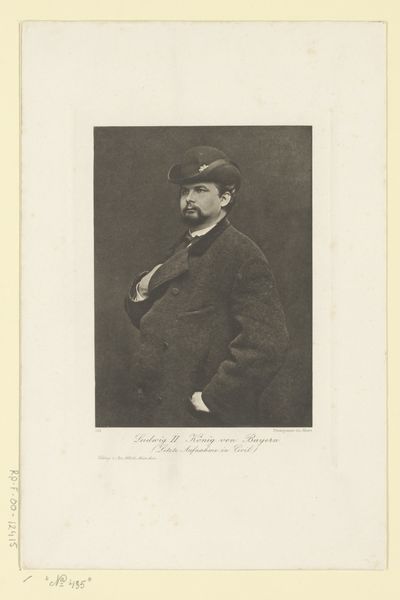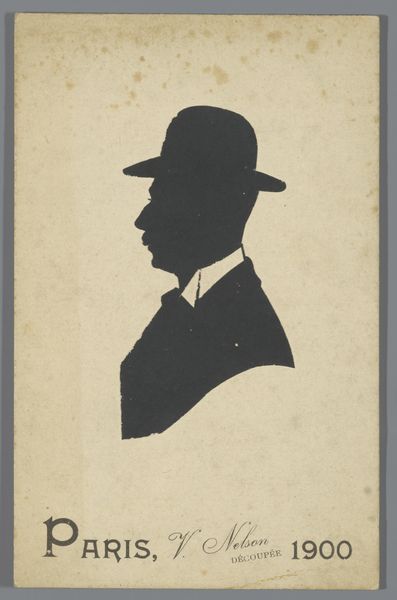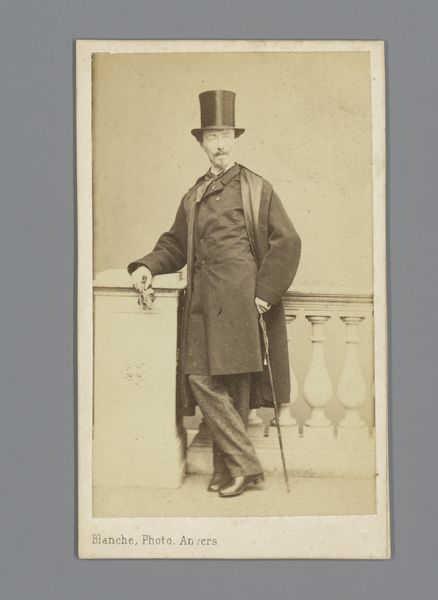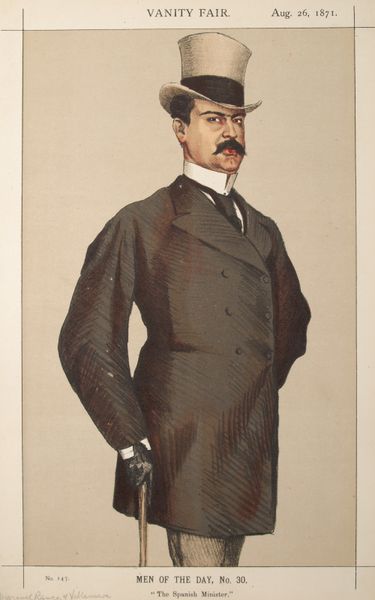
photography, gelatin-silver-print
#
portrait
#
photography
#
portrait reference
#
gelatin-silver-print
#
realism
Dimensions: height 231 mm, width 174 mm, height 168 mm, width 119 mm
Copyright: Rijks Museum: Open Domain
Curator: This gelatin-silver print, titled 'Reproductie naar een foto van Willem Witsen', comes to us from somewhere between 1860 and 1915. The Rijksmuseum is its current home. Editor: It strikes me immediately as rather melancholic. The strong contrast emphasizes the deep shadow cast by the hat, obscuring his eyes and creating a sense of mystery and reserve. Curator: That melancholic feel aligns with the rise of photography and its function within societal strata at the time. Photography was no longer purely documentary; it became accessible as a means for memorializing or crafting self-representation. What statement does he want to make? The photographic process involved particular chemicals and papers, and these material choices contribute directly to the tonality. Editor: Precisely! We have to consider the rise of the photographic studio, how pose and props shaped one's identity through popular consumption and expectation. The bowler hat, for example, was almost ubiquitous—but his subtle gesture lends individualism within the constraints. It challenges the idea of photographic 'truth' through performativity. It became as crafted and curated an object as a painting. Curator: The very materiality of the gelatin-silver print offers texture and depth—think about the labor involved in coating and processing the paper—and how this mass reproducibility democratized the artistic process while changing traditional valuations of 'high' art. Also, considering the state of reproducibility means questioning its "aura." It changes from object of value to one that reflects the modern era through reproduction. Editor: Indeed. I also notice a distinct blurring. This seems deliberately aesthetic, creating softness and removing imperfections which links directly to artifice within the photographic process itself. As photography became ingrained, its narrative role shifted; this portrait serves less as a true record, and more a staged image, steeped in cultural symbolism and subtle expressions. It opens more question than offers solutions! Curator: Agreed. It seems to invite considerations beyond pure representation. A deep look into both society and the development of gelatin-based mediums in mass consumption allows one to grasp so many intricacies related to identity, portraiture, labor, and society during its time. Editor: For me, it's a powerful study in how technological innovation and artistic expression became entangled with identity in a rapidly evolving world.
Comments
No comments
Be the first to comment and join the conversation on the ultimate creative platform.

